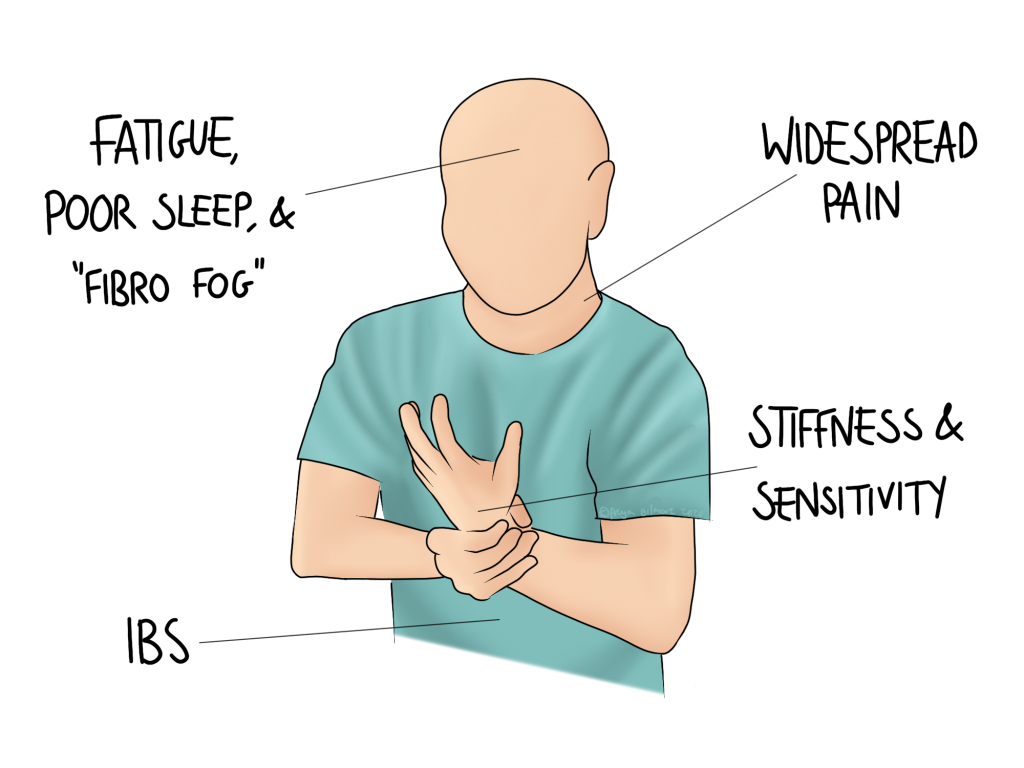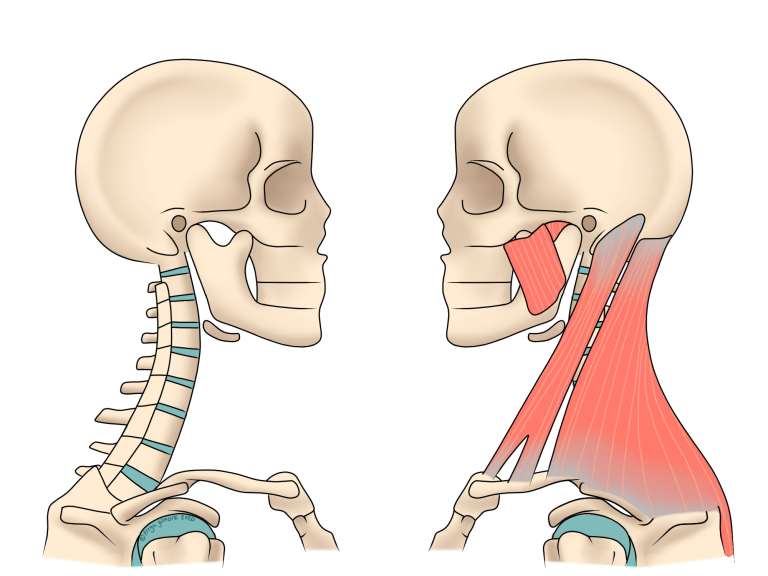The word “fibromyalgia” literally means “soft tissue pain”, referring to the muscle and tendon pain that characterises the condition. The name doesn’t allude to the fatigue and other symptoms that are also key symptoms in reaching a diagnosis. Fibro is a chronic pain condition, affecting women more than men. It may develop following physical or emotional trauma, or a viral illness. But often the onset is unclear. Symptoms include widespread aches and pains, fatigue, brain fog, and potentially digestive symptoms among others. There may be a genetic link, and often stress or burnout precede the condition’s development.

Diagnosing Fibromyalgia
Although awareness is rising, it can still take a long time to work through the system and get that diagnosis. One reason for the delay is that there are no tests to rule in fibromyalgia, only those to rule out other problems. Depending on the presentation, it may behave like rheumatoid arthritis, in which case you may be referred for scans and blood tests. Fibromyalgia might only be considered when these tests do not show the expected results.
Formally, diagnosis needs to come from a rheumatologist. Your osteopath is not qualified to give you the label, but we can direct you towards the right person. The diagnostic criteria does not require any imaging or pathology test results, so we can support your case with a lot of evidence if you’re struggling to navigate the system. Before 2010, fibro was diagnosed by the presence of a number of tender points in specific areas. This is outdated, but some practitioners still gravitate towards it. The current criteria is a lot more holistic, focusing on:
- Widespread, chronic (over 3 months) pain that cannot be explained by another condition
- Fatigue, and issues with concentration and sleep (known as “fibro fog”)
- Additional symptoms such as IBS, skin issues, and other systemic problems
If this array of symptoms affects you, they may well be connected, even if they seem distinct. We recommend speaking to your GP to rule out any other issues, but you’re welcome to start osteopathic treatment before any investigations have been completed.
Management
For a condition encompassing chronic fatigue, you might be surprised to learn that the most effective treatments involve exercise. Of course, jumping straight into high intensity exercise will not help to manage the muscle pains, nor the fatigue. But gradually increasing gentle exercise over time has been proven to reduce both pain and fatigue. If you’re in the medical system and have been given your diagnosis, you may be fortunate enough to have a team behind you that includes someone who can prescribe and monitor your exercise. If not, your osteopath can help to support your return to exercise. We can also keep an eye on aches and pains that may develop in response to the increased activity to reduce any new bumps in your road to recovery.
You may find that your body has adapted to your pain and discomfort, leading to strains in other areas. We can work to reduce this additional tension for symptomatic relief alongside your fibro treatment plan.


